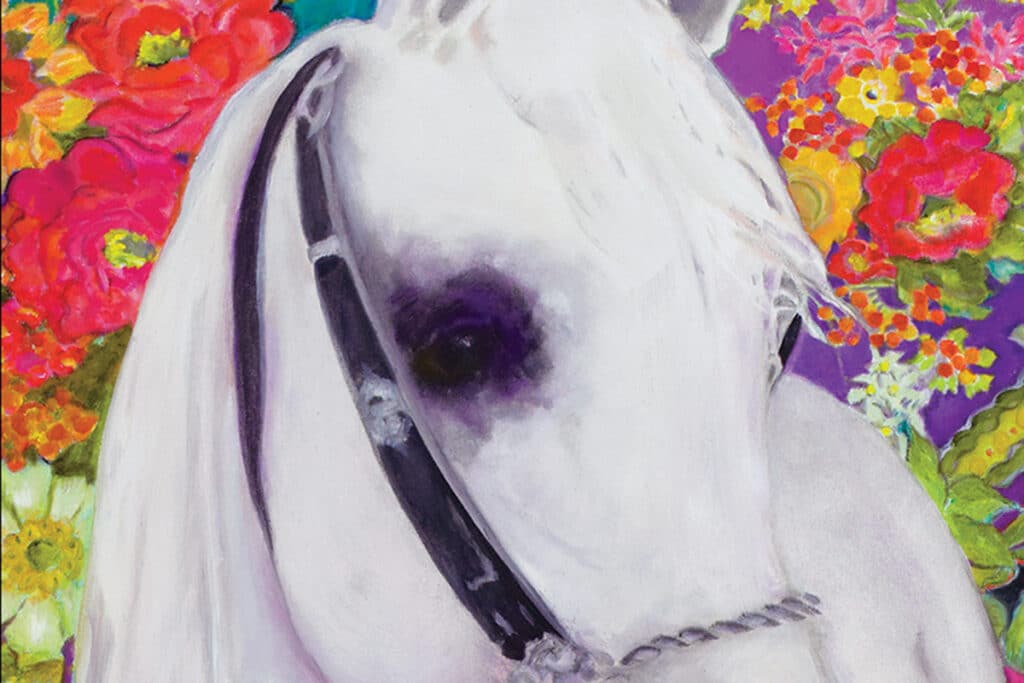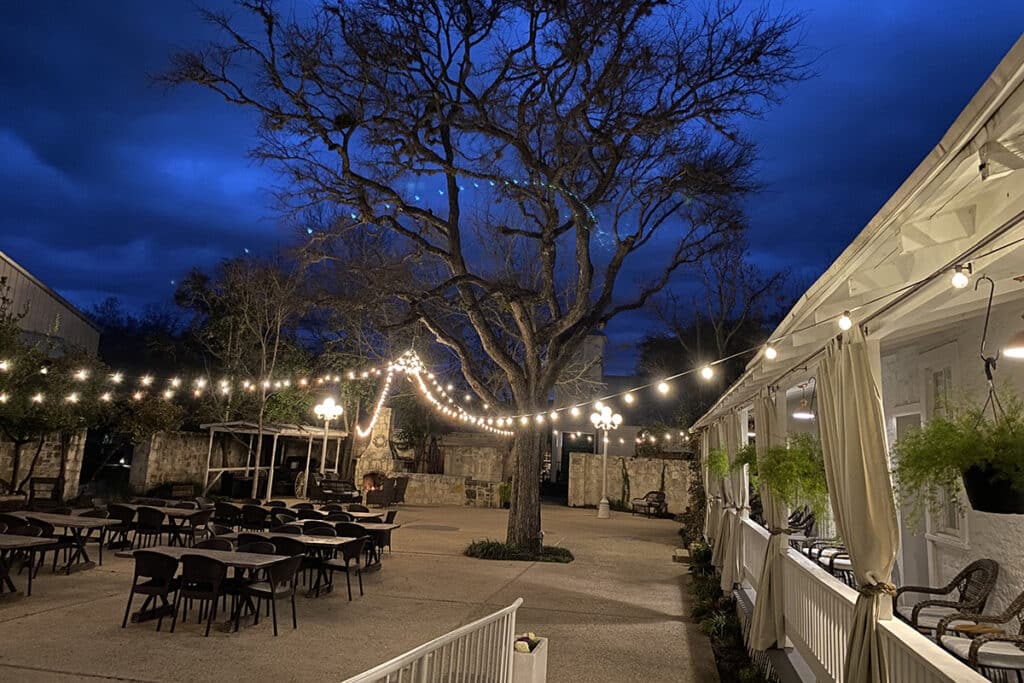The first thing I notice upon entering Sidney Sinclair’s studio is a fairly large square painting of a cross, which, while recognizable as such, is also a free interpretation of the subject rendered in multihued patches of purple, yellow, coral and cream against a coral background. It looks like this cross is bursting out of its physical limits to reveal its inner self. Does it have a title? I ask. Though it is to be shown only a couple of weeks later at the Hill Country Invitational Art Show and Sale, Sinclair has not gotten around to naming it yet. But she has given great names to other cross paintings, such as The Road Less Traveled, From the Earth and Spirit of the Southwest. Though she had done similar paintings before, her focus on crosses sharpened recently following a trying period in her life when she was diagnosed with kidney cancer, lost a kidney and underwent a year-long recovery process. Now more than ever she wants her work to reflect her gratitude to God and the beauty of his creation, the latter depicted in her other favorite subject landscapes.
“I bring my spirituality to these pieces, but the people who like them and buy them bring theirs,” says the Boerne-based artist, who is represented by the J.R. Mooney Galleries in both San Antonio and Boerne. “Painting has more meaning to me now than a year ago. I want people to see the hand of God in my paintings, to see something that gives them peace.”
Both her landscapes and crosses sell well. While a few traditional landscapes inspired by Hill Country sights are lined up against a cabinet in the studio, there are no older examples of crosses because they now hang in other people’s homes. So she whips out an iPad to show me photos of earlier paintings. With her finger pointing at one done in predominantly red tones, Sinclair explains that it was bought by a man who later invited her to see her handiwork hanging in his home. “It was so perfect on that wall that it looked like he had commissioned me to make it for him,” says the artist with satisfaction. Another one, My Blue Heaven, is an elongated, skinny, mostly-blue specimen that seems to derive its energy from its very simplicity. Yet another glows in the center as if illuminated, with surrounding rioting colors nearly obfuscating the basic shape. She approaches each blank canvas by first creating a distribution of textured areas using a special soft paper, wetted, crushed and applied with glue. Next comes all-over background color, followed by the image itself, which develops slowly as intuition and principles of balancing color fields combine through her brush strokes. These are her “abstracts,” she says, because they are more color compositions than straightforward representations of the sacred symbol.
In addition to the Hill Country Invitational mentioned above, Sinclair is also getting ready for two other special occasions this fall: the closing exhibit at J. Hester’s Highland House Gallery, which has carried her work since its opening, and then a show at the Boerne branch of Mooney Galleries. Her work is also available at the Worrell Gallery in Santa Fe. Then closer to Christmas, she expects to have brand-new pieces for the public to see.
Life As A Painting
Though her educator parents appreciated the arts, Sinclair did not discover her own aptitude until she took an art class her senior year in high school. She credits the teacher, Betty Briggs, for seeing something in her that she hadn’t yet seen herself. Upon graduation, the young woman went on to study education and art at Trinity, subsequently working for many years as an art teacher. But 10 years into the job, “I was burned out, teaching some 260 kids a day,” she says. It was time for a change, yet freed from teaching, she found herself at loose ends. When her husband, Bob Lee to whom she has been married since 1974 bought her a camera, the budding artist enjoyed snapping pictures for a while. Still, that was not her calling. Painting was. Once started on that path, she never looked back, pursuing hands-on instruction from wellknown artists who also worked in the representational style, such as the late Warren Hunter and J. Hester, with whom she studied for 17 years.
“I started a little later than most artists, but I have been so fortunate to have good teachers and cheerleaders along the way,” notes the artist.
When she felt confident enough, Sinclair showed her work to NanEtte Richardson, who has run a successful commercial gallery in San Antonio for decades. Despite many sales since that time, it is always a thrill to see that others want something you created and are willing to pay for it. “It’s a great feeling of satisfaction. I’ve never gotten over the excitement of it,” admits Sinclair honestly. If there are no takers, she’s philosophical about it, telling herself that the right person just hasn’t come by yet.
Following years of commuting to Boerne to work with Hester, Sinclair convinced her husband that they should move to that town, which they did in the mid-2000s. Now it’s Lee who is commuting to his job as a civilian lawyer for the Department of Defense in San Antonio. For an artist, Boerne is a nurturing place, she feels. Boerne Professional Artists, of which she is a member, organize art events throughout the year, including the fall Invitational, the Parade of Artists in the spring and a monthly Second Saturday Art & Wine day a la San Antonio’s First Friday. When she was ill last year, her colleagues volunteered to set up her personal display for the fall exhibit. Sinclair has also returned to teaching, albeit only twice a week and only adults who gather in her studio. “What I say to my students is that you can make a living with art, but you have to think in terms of what the public wants to buy. Artists don’t like to think that way, but that’s reality,” she observes. And she also imparts to them something that a teacher taught her. “He said, ‘You need to look at life as if it were a painting.’ So I started looking at things and thinking, ‘How would I paint that?’ If you look at life from that perspective, you become more observant and you learn to enjoy life more.”




